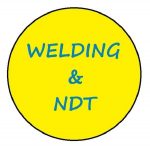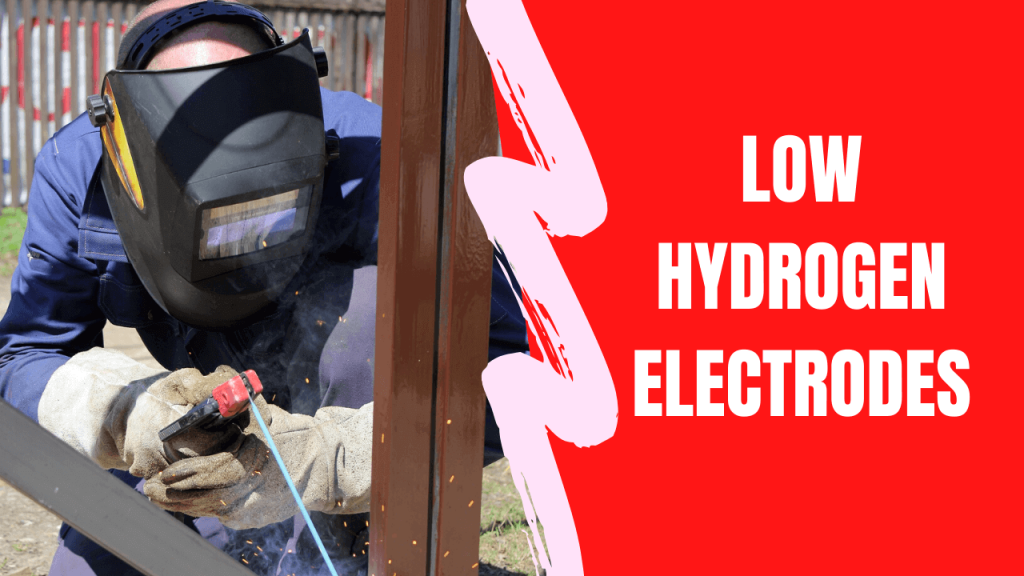Low Hydrogen electrodes are very popular in the industries because of the following reasons;
- Ability to produce X-ray quality welds
- Good weld bead appearance
- Ability to weld thicker material with high deposition rates
- Less susceptible to failures and cracks especially Hydrogen Induced Cracks
- Sound weld metal properties with good toughness
- A smooth, stable and quiet arc with less spatters
- Good penetration and deposition rate
- Easy initiation of arc and good control over the arc for welders
- Faster post-weld cleaning
- Ability to join steels with poor weldability such as high carbon steels, low alloy steels, etc.
The above benefits have made low hydrogen electrodes the first choice for welding critical components that are prone to failures during service or which involves several hazards and dangers.
Why low Hydrogen electrodes are so beneficial?
The reason behind the above-mentioned qualities lies in the covering or the flux materials. The covering (flux) of a low Hydrogen electrode has two unique features;
1. Low Hydrogen content: The Hydrogen content or the amount of Hydrogen in the covering of such electrodes is very low. A higher level of hydrogen in weld metal possesses risks of brittle failures and delayed cracking or Hydrogen Induced cracking. Hence, a lower level of hydrogen covering in the electrode will ensure that only a limited amount of hydrogen will enter into the weld metal, which can prevent the above-mentioned failures.
2. Contains basic minerals: The basic minerals in electrode coverings imply that the chemicals present in the covering reduce the oxygen content in the weld and minimize the harmful oxide inclusions at the grain boundaries of the microstructure, which results in a cleaner weld with high toughness.
Which electrodes are known as Low Hydrogen electrodes?
The following electrodes are known as low hydrogen electrodes;
- Exx15 (E7015)
- Exx16 (E7016)
- Exx18 (E6018, E7018)
- Exx28 (E7028)
- Exx48 (E7048)
The following table (Table – 1) gives a list of all low hydrogen electrodes, type of covering, applicable welding positions and type of current and polarity required;
Table – 1
| Electrode classification (AWS 5.1) | Type of covering | Applicable welding positions |
Current and polarity |
|
E6018 |
Low-hydrogen potassium, iron powder | F, V, OH, H | AC or DCEP |
|
E7015 |
Low-hydrogen sodium | F, V, OH, H | DCEP |
| E7016 | Low-hydrogen potassium | F, V, OH, H |
AC or DCEP |
|
E7018 |
Low-hydrogen potassium, iron powder | F, V, OH, H |
AC or DCEP |
|
E7028 |
Low-hydrogen potassium, iron powder | H-fillet, F |
AC or DCEP |
| E7048 | Low-hydrogen potassium, iron powder | F, OH, H, V-down |
AC or DCEP |
Where,
|
|||
What happens if Hydrogen will be present in the weld metal?
From the above discussion, it is clear that a low hydrogen electrode is used to prevent failures or cracks by restricting Hydrogen from entering into the weld metal. Nevertheless, what will happen if a significant amount of Hydrogen will enter into the weld metal? or how the lower level of Hydrogen ensures good welding?
If a significant amount of Hydrogen atoms gets dissolved into the weld metal and doesn’t get any chance to escape then delayed cracking occurs. Delayed cracks may occur after several hours or days of solidification of weld metal.
Such cracks may occur parallel to the fusion boundary and within the heat-affected zone or may originate in the weld deposit also. It is also known as underbead cracking.
If molten weld puddle is rapidly cooled, then two things may happen;
1. The resulting crystal structure will be a mixture of ferrite and carbide: Hydrogen is almost insoluble in ferrite, Hence the Hydrogen atoms will escape or diffuse from the weld metal and the weld metal will be more ductile and crack resistant.
2. The crystal structure will be transformed into martensite: The Hydrogen atoms do not diffuse from a martensitic crystal structure and gets trapped in the weld metal. Hence, chances of getting crack will be more. To prevent this preheating may be carried out. Preheating of base metals essentially slows down the cooling rate and helps in diffusion (escape) of Hydrogen atoms from weld metal
Baking of Low Hydrogen Electrodes:
Low-hydrogen electrodes must be kept free from moisture and other contaminants. Because moisture/water is a potent source of hydrogen.
To prevent the electrodes from moisture contamination, they are frequently packed and supplied in hermetically sealed containers.
The electrodes must be baked before using, as per the recommendation of the manufacturer. However, preliminary guidance for baking is available in ASME Section II Part C; an extract is available in table 2 of this article;
Table -2
|
Electrodes (As per AWS 5.1) |
Holding Ovens |
Drying Conditions |
|
E6018 E7015 E7016 E7018 E7028 E7048
|
50°F to 250°F
[30°C to 140°C]
|
500°F to 800°F [260°C to 425°C] 1 to 2 hours at temperature |
The E7018 electrode is one of the most preferred low hydrogen electrodes in the industries. It contains a sufficient amount of iron powder in the covering and works best if used with direct current reverse polarity (DCEP).
Due to the presence of iron powder, a higher deposition rate is achieved and it quiets the metal transfer. The weld quality and bead appearance are very good.
The coverings of E7018 and E7015 electrodes are similar, except for the addition of a slightly higher percentage of iron powder in E7018 covering. The coverings on these electrodes are relatively thicker than those of the E7016 electrodes.
The E7016 is designed for direct current AC; The E7015 is similar to the E7016 but operates with DC.
The covering of the E7028 electrode is quite thick and contains a high iron powder content. Their deposition rate is the highest among all the low-hydrogen electrode types. However, they can be used in a horizontal and flat position.
The E7048 class is similar to the E7018 type but designed for downhill applications only
Mandatory and Optional Supplemental Designators on electrodes:
An electrode is identified by the following;
- mandatory classification designators
- optional supplemental designators
For Example EXXXX-1 HZR
The first four-letter after ‘E’ are known as mandatory classification designators and the digits and numbers given after hyphen (-) are known as optional supplemental designators and these are optional hence may be used depending upon the requirements.
Now, we will understand the meaning of mandatory classification designators;
In E7018:
- The letter ‘E’ stands for an electrode
- The first two digits i.e. ‘70’ denotes the minimum tensile strength i.e. 70 Ksi (or 70000 Psi)
- The second last digit i.e. ‘1’ indicates the position in which the electrode can be used. In particular, the letter ‘1’ depicts all positions
- The last two digits together show the polarity and the flux composition of the electrode.
To read more about the electrode symbols and their meaning please click here
As we have understood about the mandatory electrode designators, now we will understand about the optional supplemental designators;
In EXXXX-1 HZ R
‘1’ indicates that the electrodes (E7016, E7018, or E7024) meet the requirements for improved;
- Toughness for electrode E7016 and E7018
- Ductility for electrode E7024
‘HZ’ Designates that the electrode meets the requirements of the diffusible hydrogen test with an average value not exceeding “Z” mL of Hydrogen per 100 g of deposited metal, where “Z” is 4, 8, or 16.
For Example, E7018-H4R indicates 4ml (avg) diffusible hydrogen content in 100g of deposited weld metal
Finally the last optional designator i.e. ‘R’ Designates that the electrode meets the requirements of the absorbed moisture test. The electrode is exposed to an environment of 80°F [27°C]/80% relative humidity (RH) for not less than nine hours by any suitable method for the moisture test.


I think there is an error in the welding electrode table. E7048- position column. 4 represents only downhand. Please correct me if I’m wrong.
When using vaccum packed electrodes, how long can the electrodes be out of the vaccum pack before baking?
12p thk is2062 gr b and c20 bar 450 dia welding.
Which electrode use ?
Regards